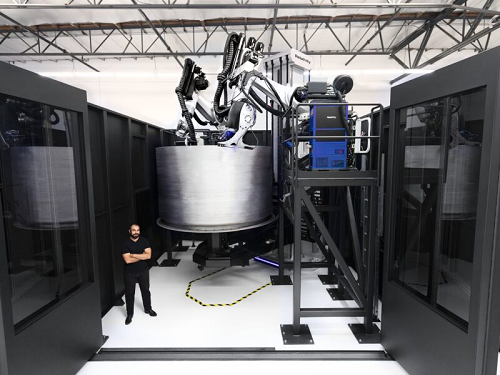My fascination with aerospace started young, and I started studying planes–identifying them in the sky and learning everything I could about how they work. Fast forward to my first week at USC, where I was pursuing an aerospace engineering degree, and I was introduced to the USC Rocket Propulsion Lab. That fateful moment is when my career took a left turn into rocket science. I immediately joined the group and eventually went on to lead it my junior and senior years. It was exhilarating. We were given the freedom to design and fly rockets. To build, learn, iterate, sometimes fail, but always keep trying. Eventually, through a lot of persistence, I became the youngest person in the world to get an FAA clearance to fly a rocket to space.
After USC, I found myself at SpaceX working on the Dragon cargo and crew spacecraft. I was a young twenty-something working on highly complicated space missions and working to solve real needs. I joined the organization as it was scaling and was exposed to entrepreneurialism and ambition. That really stuck with me.
The idea for Relativity Space came out of conversations that co-founder Tim Ellis and I had by phone during my long commute from South Pasadena to the SpaceX office in Hawthrone. We both started to see benefits in 3D printing in our roles at SpaceX and Blue Origin. As we talked more and started to put pen to paper we realized we wanted to take metal 3D printing to the next level by solving for scale. We wanted to figure out how to print an entire rocket, so we got to work. As Founding Chief Technology Officer, I led the team that developed the technology to create a 3D printed rocket before stepping away from the organization. As you can imagine, I was incredibly proud to witness the successful launch of Terran 1 this past spring.
Relativity Space’s Terran 1 launches from Florida. Image courtesy of Relativity Space.
Now that I’m a VC, it seems comical that I’d do a Google search to get funding, but that’s what we did to start Relativity. In hindsight that was another formative moment for me. People ask me often why I left Relativity after just five years. What I realized in those five years is that I love solving problems and building things from scratch. When I left Relativity it had grown tremendously and was well on its way to achieving what we had set out to do. I wanted a new challenge and to continue building new things.
My transition into VC wasn’t exactly planned, but I got an offer that I just couldn’t resist. An industry colleague, Jenna Bryant, asked me to advise on starting a deep-tech VC firm. After some discussion and some cajoling on Jenna’s part to get me to be a partner in the firm, I realized that I was being offered such a unique opportunity. I could help other founders build their dreams, not only with funding, but with guidance and counsel from my own experience as a founder.
As an investor I get to work with founders who are solving problems, looking to fill the white space and building new things from the ground up. Given my background developing Relativity’s printers, I saw the majority of early-stage 3D printing companies, and I found them often underwhelming. However, one of our first checks as a VC fund was into Chromatic 3D Materials, a 3D printing technology company using chemical reactions to make manufacturing more flexible, cost-effective, and sustainable. What struck us about Chromatic was its focus on reactive printing, which enables material properties lightyears ahead of traditional non-metallic printing. By controlling a chemical reaction in their print head, they avoid the melting/fusion cycle that breaks down high-quality polymers. Instead, those high-quality materials are formed in-situ.
As the 3D printing industry continues to grow and evolve, I look forward to helping the next generation of startups build the future.
Jordan Noone, Co-Founder and General Partner of Embedded Ventures, will be participating at the upcoming Additive Manufacturing Strategies business summit in New York, February 6 to 8, 2024. Noone will be speaking on a panel on “Venture Capital”.
